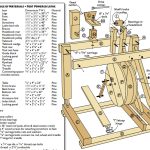Woodworking and CNC: Revolutionizing Craftsmanship
Woodworking has evolved dramatically with the introduction of CNC (Computer Numerical Control) technology. What was once considered a hands-on craft can now be automated, allowing woodworkers to create more intricate designs, improve precision, and boost production efficiency. In this post, we’ll explore how CNC technology has transformed woodworking and why it’s becoming an essential tool in modern workshops.

What is CNC in Woodworking?
CNC technology allows machines to follow pre-programmed instructions to cut, carve, drill, or shape wood. This technology utilizes a computer to control movements, enabling woodworkers to achieve levels of precision that are difficult, if not impossible, with manual tools.
- How it works: A CNC machine interprets a CAD (Computer-Aided Design) file, which instructs the machine on how to move its tools across the workpiece. The process is fully automated, leaving minimal room for error.
- Key Advantage: Consistency. Every piece produced will match the exact dimensions and specifications of the original design.
Benefits of CNC Technology in Woodworking
- Precision
CNC machines offer incredible precision, ensuring that every cut, carve, and hole is exact. This level of accuracy helps minimize waste and maximize material use. - Speed and Efficiency
CNC technology can operate faster than manual woodworking, significantly increasing productivity. It can handle repetitive tasks with ease, making it perfect for mass production or rapid prototyping. - Complex Designs
Intricate patterns, shapes, and even 3D carvings that were once time-consuming or impossible by hand are now made simple with CNC machines. It opens up endless design possibilities for woodworkers. - Reduced Labor
CNC machines automate most of the labor-intensive tasks, freeing woodworkers to focus on design and finishing touches. This reduces the need for large teams and lowers overall labor costs. - Versatility
CNC woodworking machines can perform a variety of tasks—cutting, drilling, engraving, routing, and more—using just one machine. This eliminates the need for multiple tools and machines.
Types of CNC Machines for Woodworking
There are several types of CNC machines commonly used in woodworking, each offering unique capabilities.
- CNC Routers
One of the most popular CNC machines in woodworking, routers are used for cutting, carving, and shaping large panels of wood. They can create everything from cabinetry to intricate decorative pieces. - CNC Milling Machines
CNC milling machines can handle more detailed and fine carving, ideal for creating complex designs and patterns in wood. - CNC Lathes
CNC lathes are used to shape cylindrical objects like chair legs or table columns, allowing woodworkers to create symmetrical and intricate pieces effortlessly. - CNC Engraving Machines
These machines are perfect for detailed designs, logos, or text on wood surfaces, providing sharp and accurate engravings.
Applications of CNC in Woodworking
- Custom Furniture
CNC machines allow for highly customizable furniture designs. Woodworkers can easily create bespoke pieces tailored to specific customer needs. - Cabinet Making
CNC routers are widely used in cabinet making, allowing for the production of complex joints, doors, and frames with perfect precision. - Decorative Pieces
From intricate carvings to unique engravings, CNC technology opens up new possibilities for creating detailed decorative items that would take hours by hand. - Sign Making
Wooden signs with detailed engravings or logos can be produced quickly and consistently using CNC technology, making it a favorite among commercial sign makers.
Challenges of CNC in Woodworking
While CNC machines offer many advantages, there are a few challenges to consider:
- Learning Curve
Mastering CNC technology requires knowledge of CAD software and programming. For traditional woodworkers, this can take time and training. - Cost
The upfront investment in CNC equipment can be significant. However, for those focusing on high-volume production or intricate designs, the return on investment is typically worth it. - Maintenance
CNC machines need regular maintenance to ensure they function correctly. This includes keeping the tools sharp and the machine clean of dust and debris.
Conclusion
CNC technology has revolutionized woodworking, offering unmatched precision, efficiency, and design versatility. Whether you’re a hobbyist or running a professional woodworking shop, incorporating CNC machines into your workflow can help you achieve results that were once only possible through labor-intensive craftsmanship.
Are you ready to take your woodworking projects to the next level? Explore our range of CNC woodworking machines and start creating with precision today!


